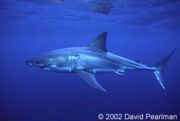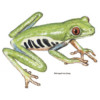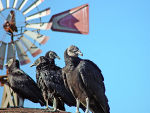Animals Diversity

|
Type Study of Chordata |
By Md. Kabir Uddin
- Introduction
- Learning Objectives
- Type Study of Amphibia
- Classification of Rana
- Geographical distribution
- Characters of Rana
- Activity
- Type Study of Reptilia
- Classification of Draco
- Geographical distribution
- Characters of Draco
- Activity
- Type Study of Pisces
- Classification of '
- Geographical distribution
- Characters of '
- Let's Sum Up
- Key points
- Glossary
- Practice test
- Answers to SAQs
- References and further readings

|
Introduction |
Animal Kingdom divided in to ten Major Phylum. Phylum Chordata is one of them in the following chapter of the Phylum Chordata have been described. general characters have been give. The classification of representatives of each class along with their characters, habits, habitats and their geographical distribution have also been described in detail.Phylum chrodata has been divided into following groups and classes, etc.
Phylum-Chordata has been devided into five classes:
General Characters Chordata
- Nerve cord is present.
- Notochord is always essentially present at some stage of life. It is completely or partly by vertebral column in majority of animals.
- Paired gill-slits are present on either side of the pharynx at some stage of life.
- Coelomate, i.e. a well developed coelom is always present.
- A post-anal tail is present at some stage of life.
| Class - Amphibia |
Characters of Amphibia
- Vertebrates animals.
- Cold blooded
- Skin smooth or rough.
- Scales, if present, hidden in the skin
- Vertebra are a centrous, pseudo centrous and noto centrous.
- Limbs tetrapodus.
- Larvae pass through an aquatic stage.
Classification of Rana:
Phylum - Chordata
Group - Vertebrata
Class - Amphibia
Genus - Rana
Species - tigrina
Geographical distribution
It is found in moist places, fresh water ponds and streams Rana is world wide in distribution. Rana tigrina is commonly called Indian bull – forg.
Characters of Rana:
- Body is green with black patches with a yellow mid-rib
- Head is flat (more or less Triangular)
- External nostrils are on the dorsal surface of the snout.
- Eyes are largs.
- Apair of typanumlie
- Limbs pentadactyle
- a) Fore - Limbs with four fingers.
- b) Ltind - Limbs bear five toes.
- c) Webbed are present.
- Lower jaw without teeth
- Tougue is large, muscular and forked and free moved
- Feeding havious: Carnivorous, small worms, snails, snails and aquatic insects.
| Class - Reptilia |
Characters of Reptilia :
- Vertebrates animals.
- Cold blooded
- Body is covered with horny seales or scutes.
- Skin is dry.
- Skin glands are absent.
- Limbs tetrapodus.
- Respriration by langs.
- Fertilization is internal
- Eggs formation.
Clanification of Draco
Phylum - Chordata
Group - Vertebrata
Class - Reptilia
Genus - Draco
Species - volans
Geographical distribution: Draco volans is found in Sumatra, Java, Broneo. One Kind of Draco found in madras (India). Draco volans is commonly known as flying dragon or flying Lizard.
Characters of Draco:
- Body is dorso – Ventrally Compressed. (about 25 am).
- Tail is very long which 12 cm. (as like a slender).
- Fore and ltind Limbs extend as a pair of large wink-like membranes, some ribs are present.
- The wink-like membranes can be folded as like a fan.
- Eye are small.
- Mole has a small nuchal crest.
- Teeth are present.
- Hooks are present.
| Class - Aves |
Characters of Aves :
- Vertebrates animals
- Warm blooded
- The fore-limbs are modified into wings.
- Hind limbs are adapted for walking and bearing four toes.
- No Skin gland except oil glands on the tail.
- Air cavities are pleasant the bones
- Modern birds have no teeth.

|
Results |

|
Key Points |
The key points of this chapter are as follows:
- Vertebra
- Cold blooded
- Scales
- Typanum
- Carnivorous
- Horny scales
- Tetrapod
- Hook.

|
Glossary |
- Phylum: Phylum is a groups of Animals which animal are clossely related. One or more same and simller class or classes are called (form) unitededly Phylum.
- Genus: One or more same and simller species formed unitededly Genus.
- Species: Species are groups of closely related organism which are capable of interbreeding to produce fertile offspring.
- Pisces:(The fishes)

|
Answers to SAQs |
1) a
2) c

|
References and Further Readings |
A manual of practical Zoology Chordates. By - P.S. Verma









